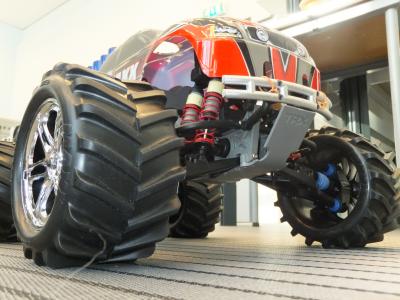EE2L21 EPO-4: BSc 2nd year practical
EPO-4 offers two variants: "KITT: Autonomous driving" and "Biosensing".
Variant "KITT": In this project you team with your fellow students to remotely operate an electric toy car called "KITT". The car is equipped with ultrasonic parking sensors, a Bluetooth connection, an audio beacon and a micro-controller.
You are in charge of this ``enhanced'' car and will design and implement algorithms so that the car can recognize and execute your voice commands; it will be able to localize itself, sense obstacles and find its way autonomously; as well as to communicate with a base station at which calculations are performed. Reliable speech recognition, high tracking accuracy and speedy and tight control are your objectives. In a series of competitions you and your team will show your achievements in challenges of increasing difficulty.
Variant "Biosensing": here you develop an Arduino-based stress detector, which involves both the hardware setup and data collection, and biosignal processing (machine learning) for stress detection. We use ECG sensors for recording heart rate, GSR sensors for recording skin conductance, and an Arduino Uno development board as the central controller for the system to record the data and store it on a computer. The signal processing part includes preprocessing of the signals to remove noise and artifacts, and machine learning tools for feature extraction to develop a classifier for stress and rest detection.
Study Goals
The practical involves the design of a complex system. The system has both hardware and software components that interact with each other. The system consists of modules, each specified, designed and tested separately, and subsequently integrated into the overall system. The practical integrates knowledge acquired in the other BSc courses.
Learning objectives
By the end of the course, you should be able to:
- Analyze a real-world application which involves both hardware and software by breaking it down into smaller modules;
- Apply signal processing and machine learning (and control) tools to design and implement the solution using matlab or python programming language;
- Systematically validate the solution (per module and end-to-end);
- Plan, manage and conduct effective teamwork for the successful realization of a technical complex assignment.
- Write and present a technical report that complies with current standards of the electrical engineering scientific community.
Teachers
prof.dr.ir. Alle-Jan van der Veen
Array signal processing; Signal processing for communications
MSc Bahareh Abdi
Biomedical signal processing
Last modified: 2022-06-19
